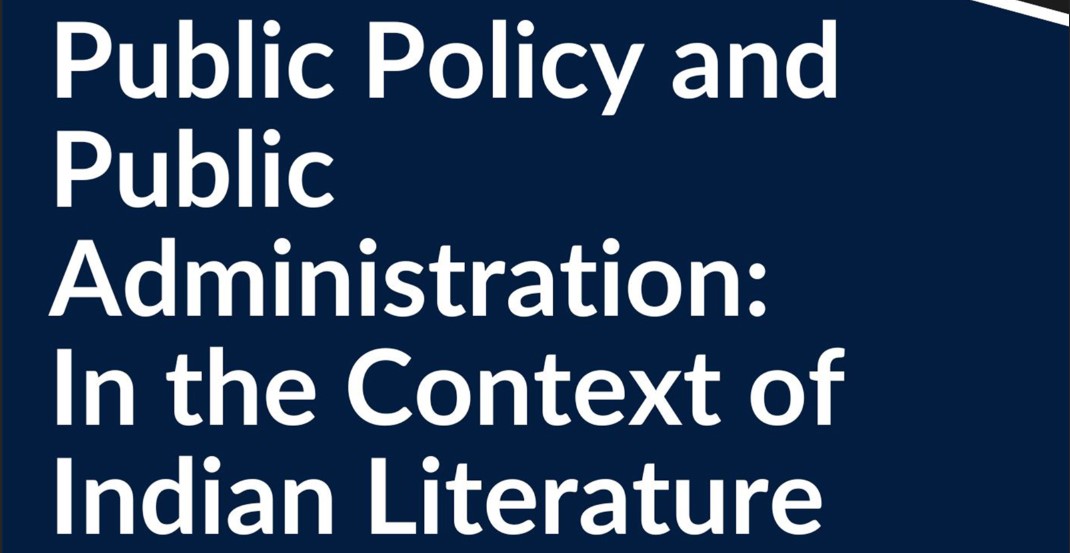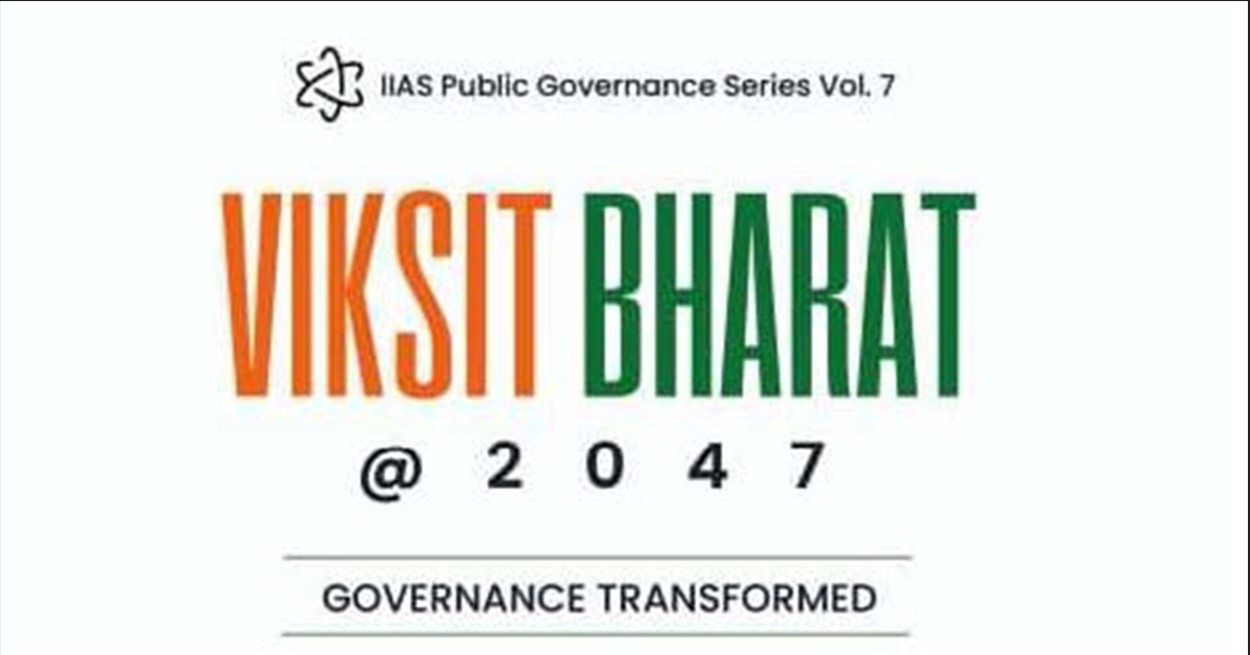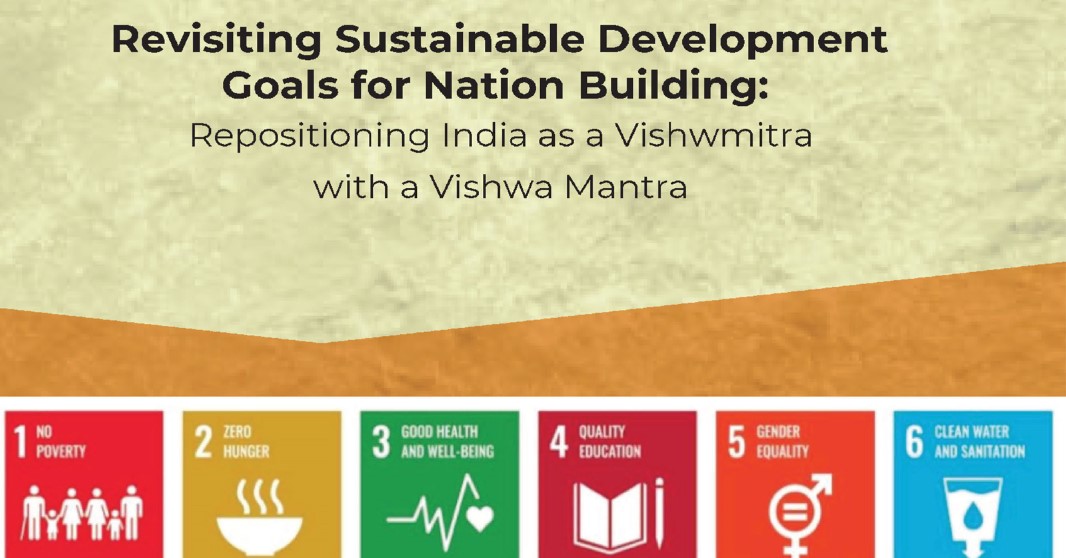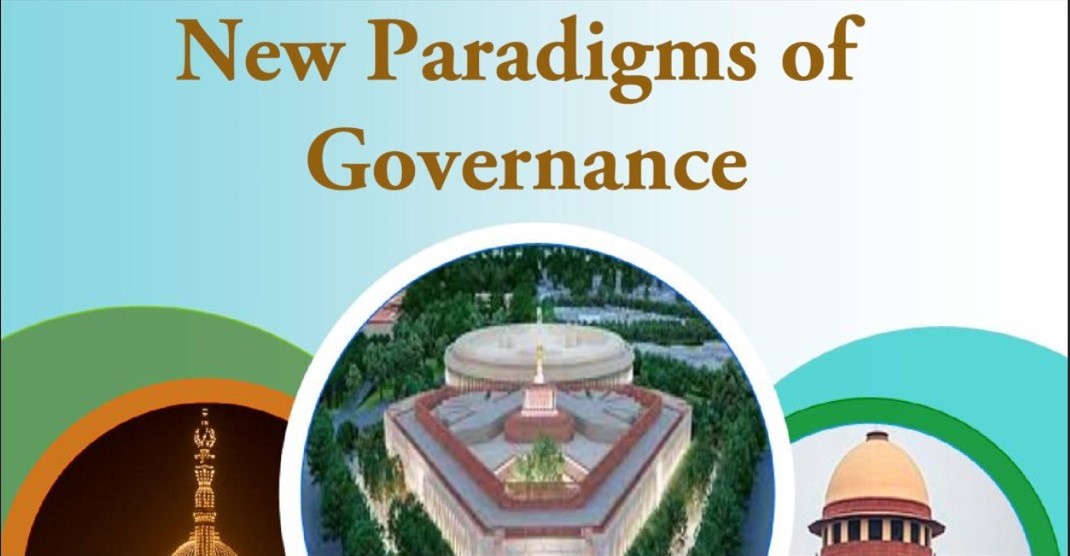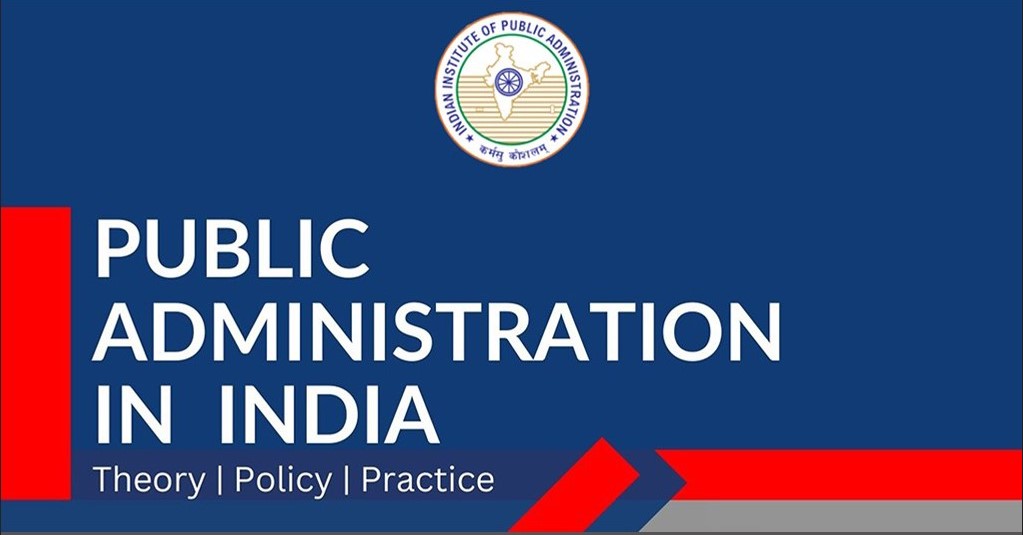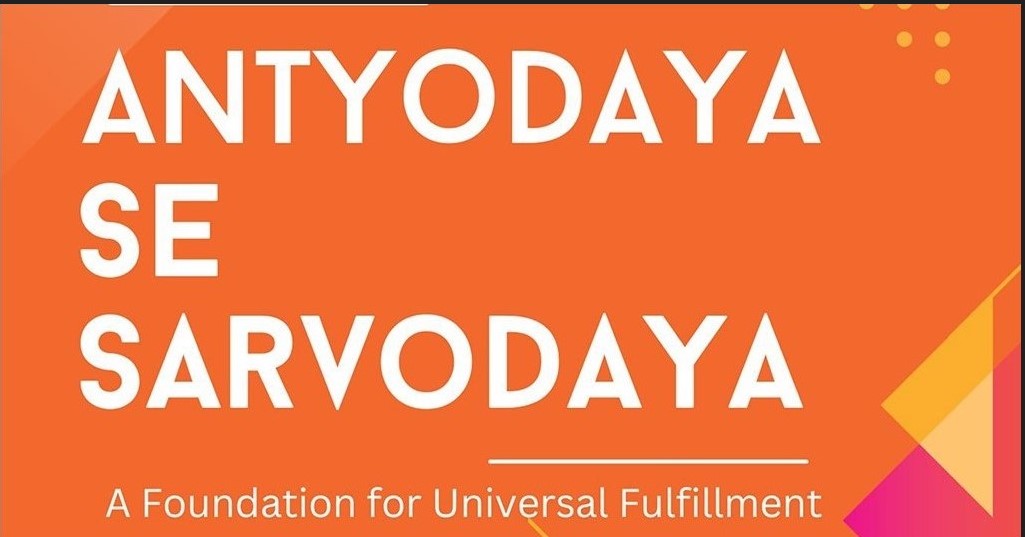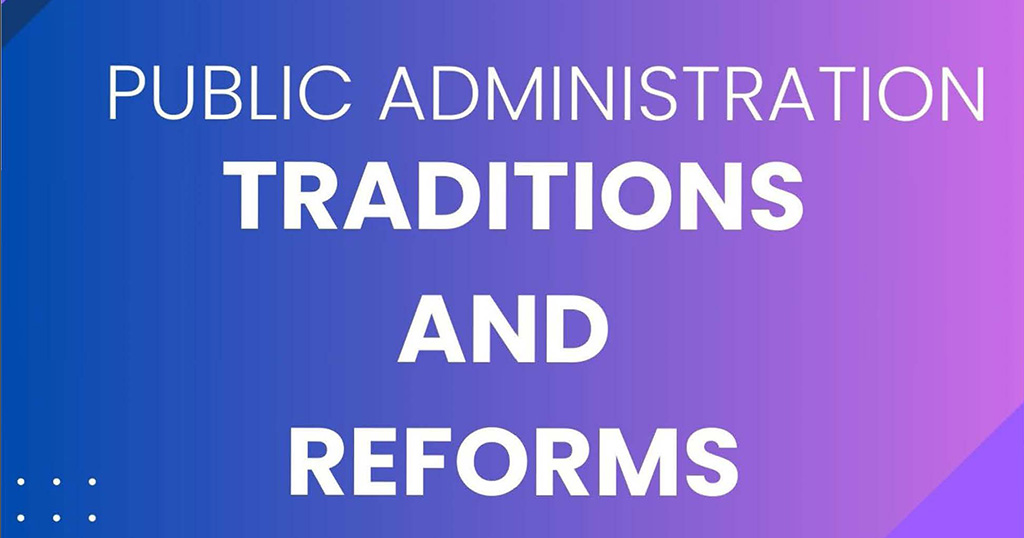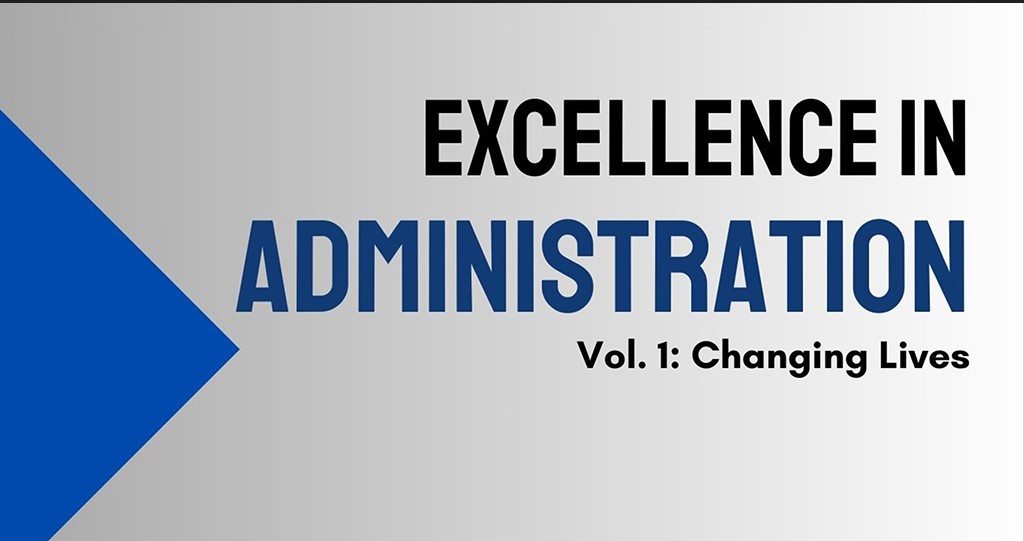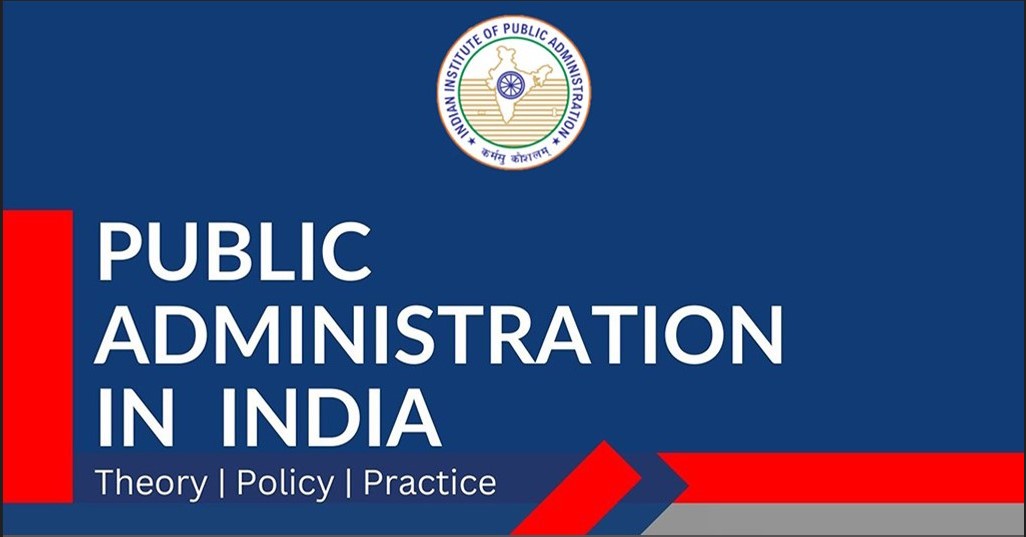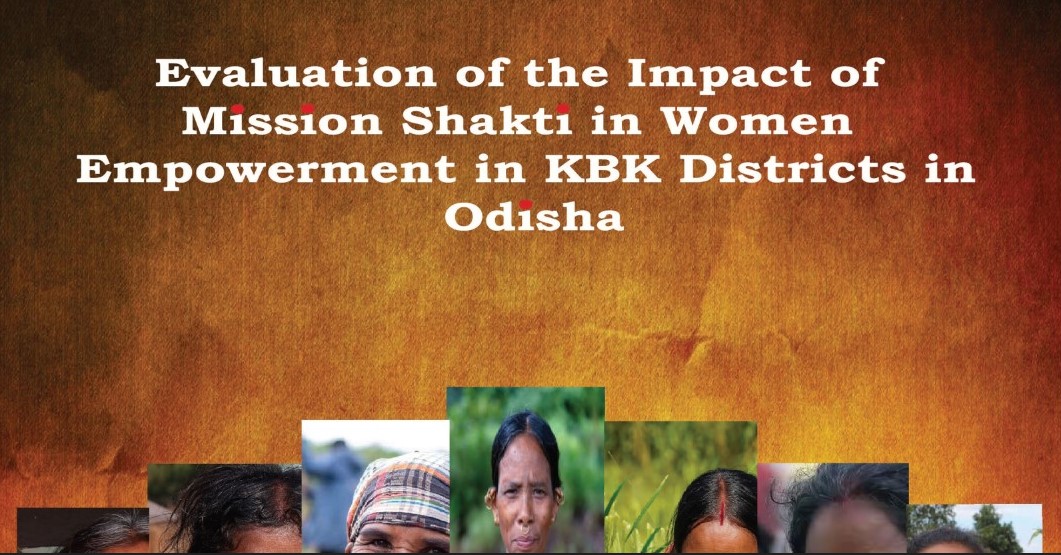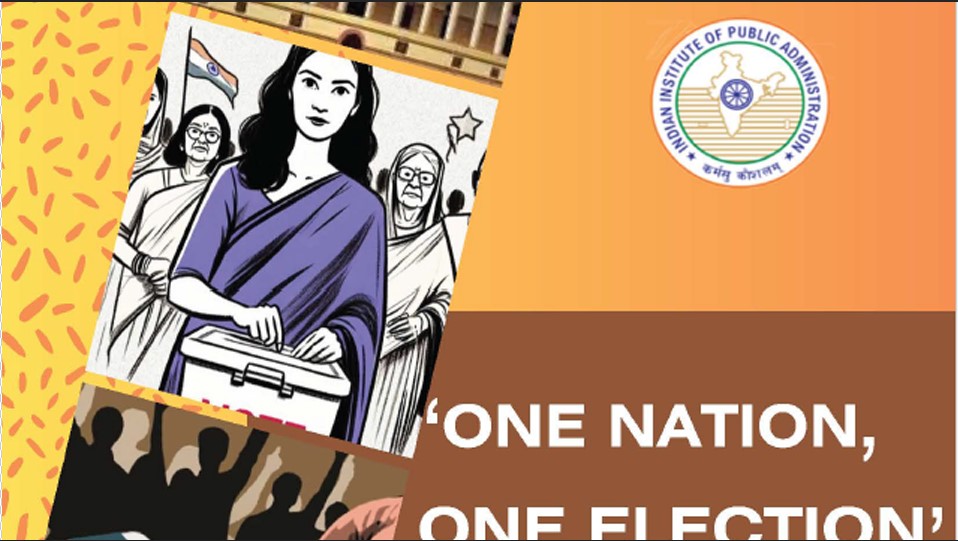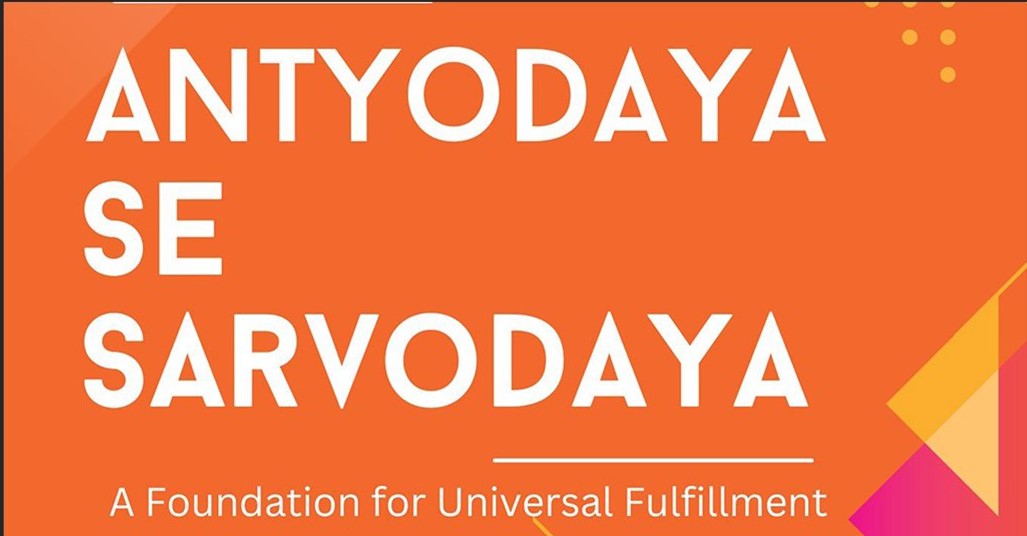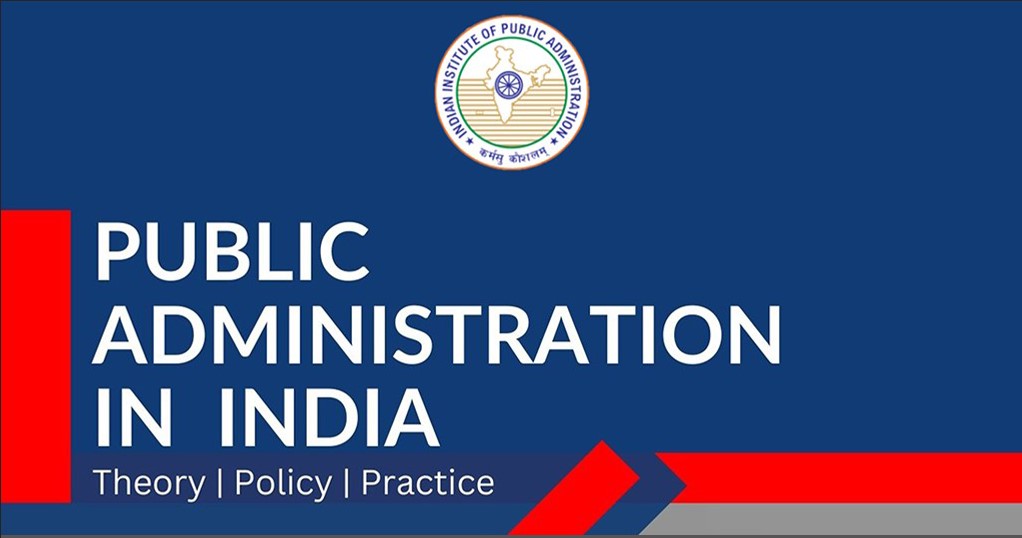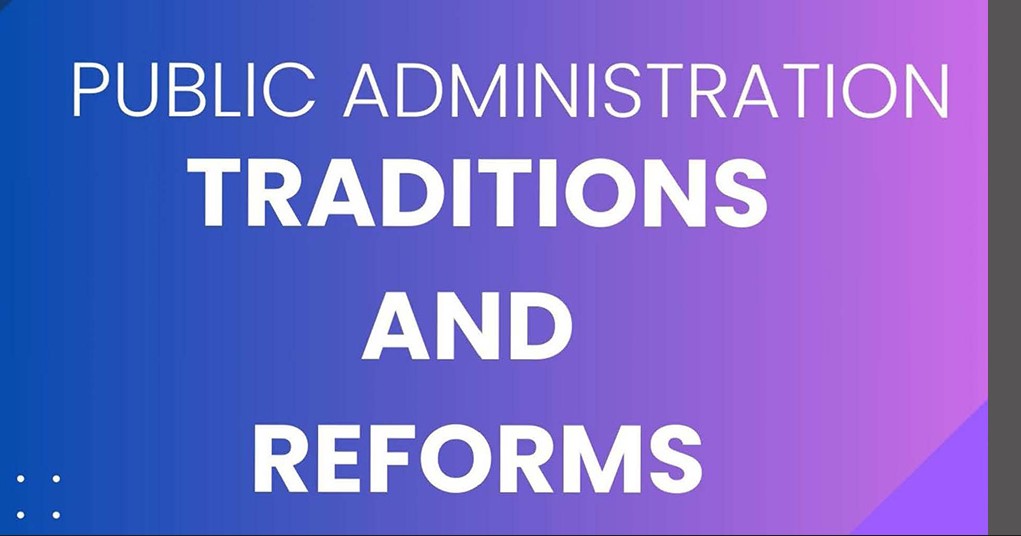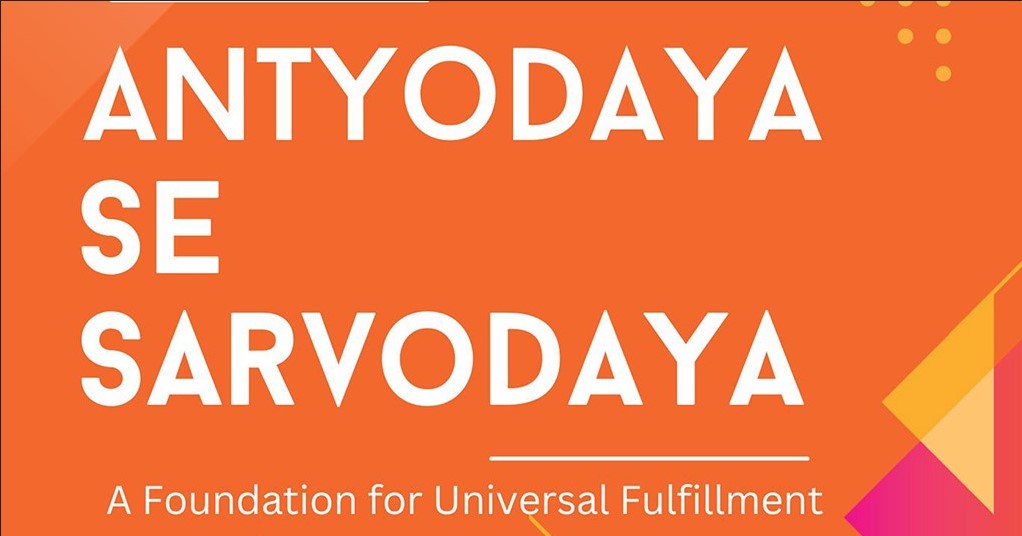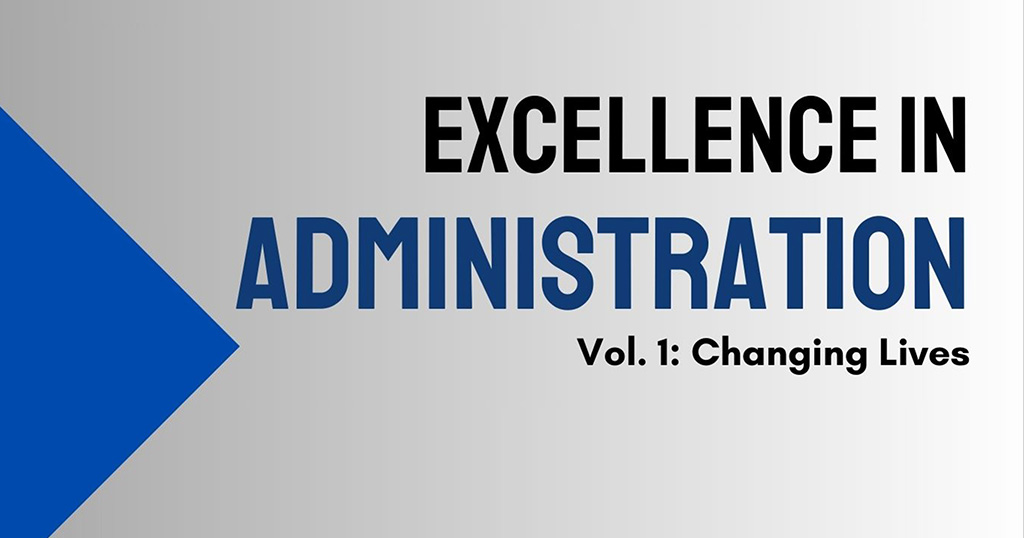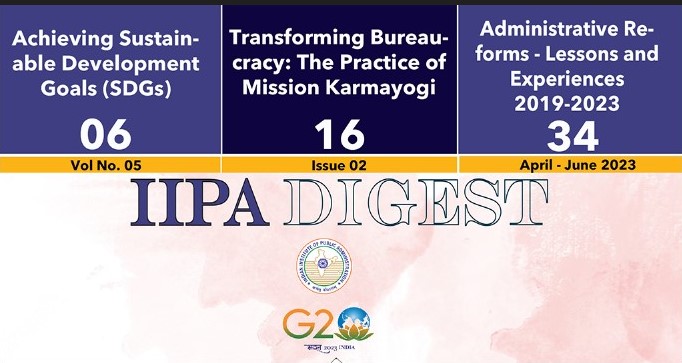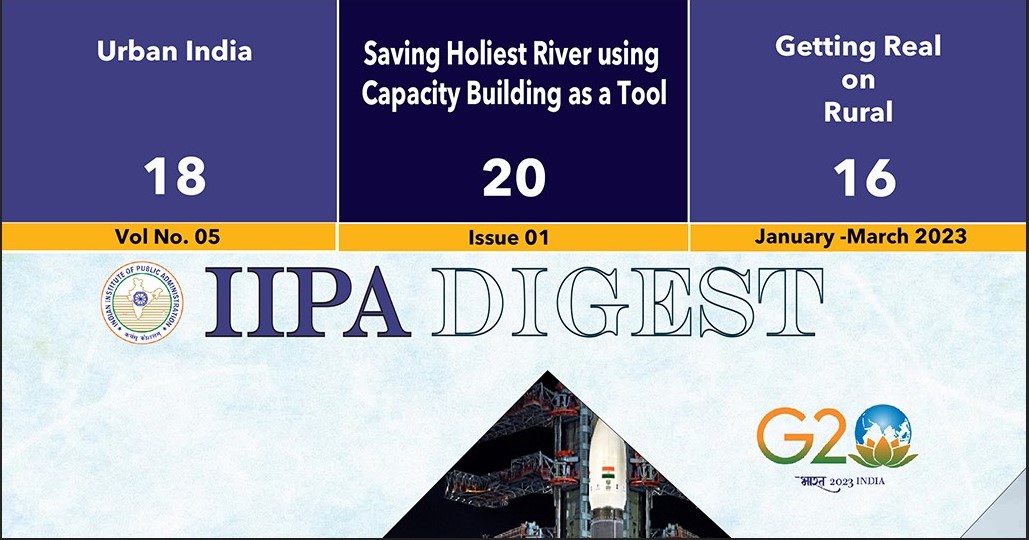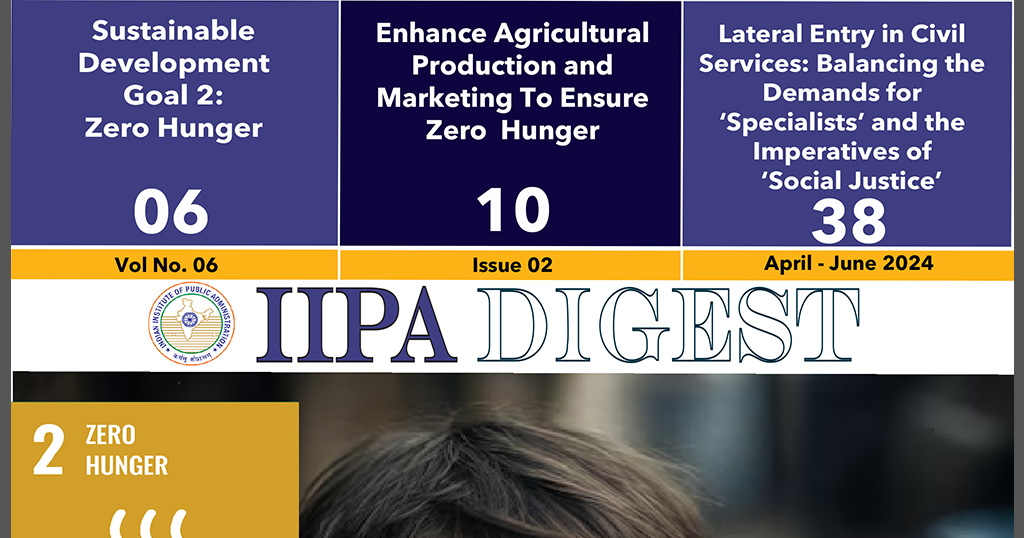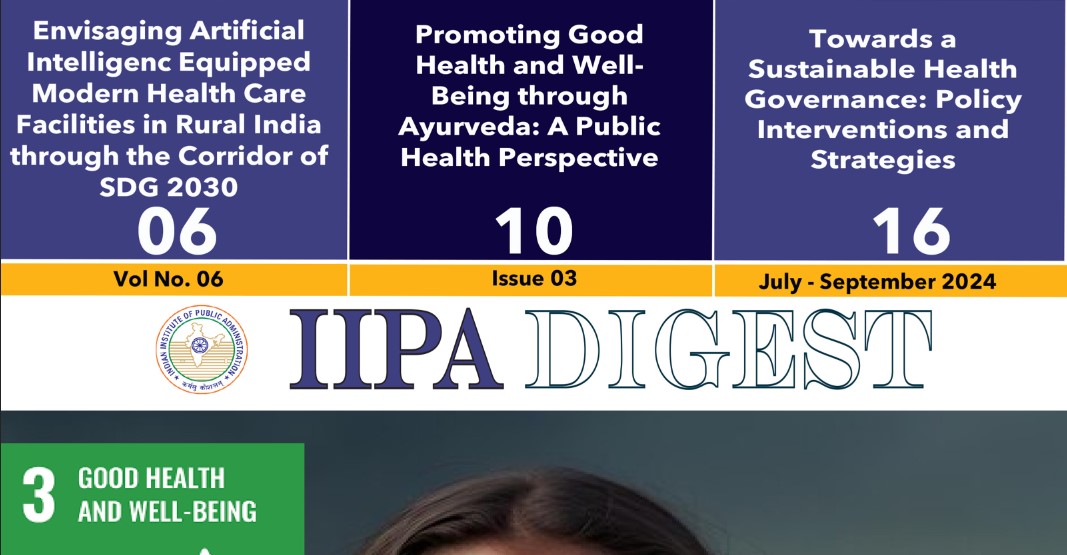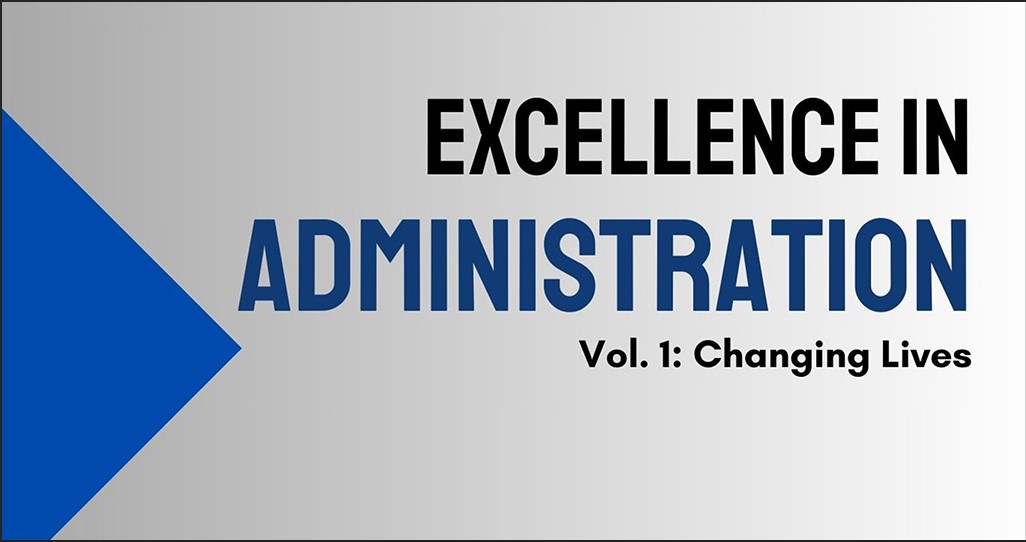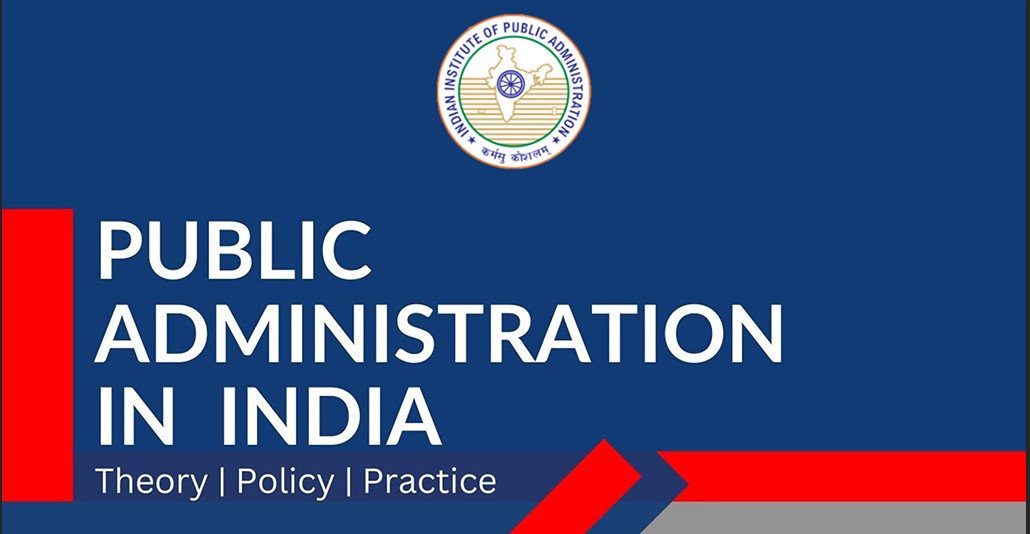Financial Administration and Management in India
12. Introduction
Understanding the distinction between financial administration and management is crucial for comprehending how government finances are structured and managed, ensuring both accountability and efficiency in the use of public funds. While financial administration involves high level policy-making and strategic oversight, setting the framework within which financial activities occur; financial management focuses on the implementation and operational aspects, ensuring that financial resources are utilized effectively in line with established policies. In simple terms, administration is “what should be done” (policy, rules, overall direction) and management is “how it is done” (executing and controlling financial activities).
It is evident that the budget serves as the foundation of financial administration, linking all operations in the realm of public finance. The scope of financial administration encompasses the preparation of estimates, appropriation of funds, expenditure control, accounting, audit, reporting, review and so on. These activities are performed by the following agencies: (a) The Executive, which needs funds; (b) The Legislature, which approves funds; (c) The Finance Ministry which manages the allocation and expenditure of funds; and (d) the Audit, reviews and assesses how the funds have been utilized.
12.1 Budget
Even after the several reforms introduced by British rule in its era, the financial system was very rigid, rule-based and complicated, leaving little room for public involvement or reform. The Financial system was designed more to serve the goals of the British rule than to address India’s needs. Unfortunately, India inherited this inflexible an outdated system at the time of independence.
With the attainment of independence, India saw a complete transformation in the goals, policy direction, and environment of financial administration. The framework of financial administration were adapted and reshaped to align with the objective of an independent nation.
India’s budgetary process is now guided by Articles 112 to 117 of the Constitution. As per these constitutional provisions, the Union Budget, officially known as the Annual Financial Statement, is presented every financial year before both Houses of Parliament. This document outlines the government’s estimated revenue and expenditure. The budget is organized according to the three main parts of the government’s accounting structure1.
i. Consolidated Fund of India
ii. Contingency Fund of India
iii. Public Account of India
Each part reflects different categories of government financial operations, ensuring a structured and transparent approach to managing public finances.
12.1.1 Types of Government Budget
Government budget comprises: Revenue Budget and Capital Budget.
i. Capital budget: All of the government's assets and liabilities are included in this budget. Two further categories into which the capital budget can be further separated are as follows: a). Capital Receipts: This category includes all incoming cash flows, whether they are non-debt or debt. b). Capital Expenditure: This category includes all costs incurred for the development of machinery, equipment, healthcare, and education.
ii. Revenue Budget: The revenue budget includes all expenses paid for out of revenue and information regarding revenue receipts. The revenue budget holds the government's money-generating sources all accountable.
Other types of budgets in India are:
i. Zero-based budgeting: In this method, every expense must be justified from scratch for each new budgeting cycle. Instead of building on the previous budget, departments start from zero base, reassess all activities and costs, and allocate funds based on current needs and priorities.
ii. Outcome Budget: Introduced in 2005, this budget type links financial outlays to the measurable outcomes of government programs. It assesses the performance of ministries and departments, tracking how funds are being used and whether they are delivering results. This helps in making government spending more accountable and result-oriented.
iii. Gender Budgeting: This is a policy tool aimed at turning government commitments toward women’s empowerment into budgetary allocations. It involves integrating a gender perspective into the planning and budgeting process.
12.1.2 Process of Budgeting in India
India’s government budget process unfolds in four distinct phases: formulation, enactment, execution and review. It all begins with budget formulation, where the government forecasts its income and spending for the upcoming financial year. This draft is then presented to the Legislature during the enactment stage, where it is debated and approved through Finance Bill and Appropriation Bill.
The finance minister presents the budget to the Lok Sabha on the last working day of February. If on the last working day of February, the house is not scheduled to meet, the House is summoned to meet specifically on that day at 5:00 PM for the presentation of the budget. The budget is presented first in the lower house by the finance minister. It is also presented before the Rajya Sabha, though it can only discuss it and has no power over grants at all.
The general discussion on the budget takes place a few days after its presentation, focusing on its overall principles without delving into specifics or allowing voting. It gives members a chance to express view on revenue and expenditure, especially the charged expenditure. Through the process, the government gauges the sentiments of the houses and responds through the Finance Minister’s concluding remarks.
The voting of demand grants in the Lok Sabha covers only the votable expenditure, excluding charged items. Conducted ministry-wise over 26 days, it allows detailed scrutiny of each ministry’s budget. Once the allotted times expires, any pending demands are put to vote, regardless of whether discussions are complete.
The General Budget consists of 109 demands 103 for civil and 6 for defence expenditure – while the railway budget includes 32 demand. Each demand is introduced by the respective Minister, typically through a politically oriented speech. This stage allows for active discussion, often initiated through cut motions, which help members focus on specific concerns. Cut motions are of three types: Policy Cut (opposing policy and reducing the demand to Re.1), Economy Cut (suggesting cost reductions), and Token cut (raising specific grievances, reducing the demand by Rs. 100). Though rarely passed due to the government’s majority, cut motions play a key role in highlighting administrative shortcomings. Once approved, a demand becomes a grant.
Charged expenditure refers to a portion of government spending that, while open to discussion in the House, is not subject to voting. This expenditure is drawn from the consolidated fund of India and is excluded from voting because it is fixed, mandatory, and cannot be altered or reduced.
The Appropriation Bill is introduced after the Lok Sabha has voted on all demands for grants, including those under charged expenditure. It authorizes the withdrawal of funds from the consolidated Fund of India, as required under Article 114 of the Constitution, which mandates that no money can be withdrawn without legal appropriation. The bill follows the usual legislative process but cannot be amended, since all grants have already been approved. Once, passed by the Lok Sabha, it is certified as Money Bill and sent to the Rajya Sabha, which can only make recommendations within 14 days. The Lok Sabha may accept or reject these suggestions. After that, the bill goes to the President for assent, which typically granted. The bill formalizes the approved expenditures and supports the functioning of the Comptroller and Auditor General (CAG) in tracking and auditing government spending.
The Finance Bill is introduced after the Appropriation Act is passed, completing the expenditure side of the budget. Since revenue is needed to fund this expenditure, taxation proposals are brought forward through the Financial Bill, as mandated by Article 265 of the Constitution, which States that no tax can be levied or collected without legal authority. This bill includes all the government’s tax proposals for the upcoming financial year. While taxes are permanent and governed by existing laws, others – like income tax and customs – must be approved annually. The Finance Bill is debated clause by clause, and while amendments to reduce or abolish taxes may be accepted, proposals to increase taxes or introduce new ones require the President’s recommendation. Once passed by the Lok Sabha, the bill is sent to the Rajya Sabha, which can suggest changes within 14 days. However, the Lok Sabha has the final say and may accept or reject these recommendations. After both Houses have considered it, the bill goes to the President for assent, after which it becomes law.
The passage of both the Appropriation Bill and the Finance Bill marks the completion of the budget enactment process.
Once passed, the budget enters the execution phase. Here, the government enforces the provisions outlined in the Finance and Appropriation Acts – collecting revenue and disbursing funds across various departments and services as authorized. In India, The Ministry of Finance has been given the responsibility to exercise over-all control over the budget execution. The Ministry oversees the spending of various authorities through a three-stage process:
i. Approving policies or programmes in principle,
ii. Accepting budget provisions, and
iii. Granting prior approval for expenditures, unless delegated to administrative ministries or departments.
The execution of the budget is continuously reviewed throughout the year. Preliminary reviews begin in September (based on four months of actual spending), followed by reviews in December and January. By January, revised estimates are prepared using data from the first nine months. If additional funds are needed, the Finance Ministry may present a supplementary budget to parliament. Adjustments are common excesses or shortfalls within a grant are balanced by transferring funds between heads, with the approval of Ministry of Finance. Unused funds are surrendered and reallocated as needed.
The final stage, legislative review involves conducting audits and financial evaluations to ensure the government’s financial activities align with the approved plan, maintaining transparency and accountability (these are further elaborated upon in subsequent paragraphs in the chapters).
12.1.3 Budget as a Means of Political Strategy
A public budget serves as a strategic financial plan that aligns government activities with the necessary resources, making sure there is adequate funding to support key functions like national defense, housing initiatives, and infrastructure maintenance. It ensures that public money is allocated effectively to meet the demands of various programs and services. Public budgeting goes beyond being a purely technical exercise it is fundamentally and appropriately a political process as well. They are expressions of governmental priorities and societal values. They embody decisions about the scope of governmental responsibility, delineating which services will be provided and which will not. These decisions reflect a collective consensus on the roles and obligations of government, such as whether it should supply services that could otherwise be offered by the private sector like water, electricity, transportation, or housing and whether access to essential services like healthcare and shelter should be guaranteed to all citizens, irrespective of income. Budgets also confront critical policy questions regarding state intervention in instances of market failure, particularly when individual financial insecurity is at risk.
Budgeting is inherently about setting priorities. It necessitates difficult choices – allocating limited resources among competing demand such as public safety, environmental protection, national defense, education, and regional development. The budget process serves as a mechanism for reconciling divergent interest among various stakeholders, ultimately determining the distribution of public resources. For example, decisions may involve whether to allocate funds toward employment programs for the economically disadvantage or toward increased security measures in response to civil unrest.
Moreover, public budget reflect the degree to which elected officials prioritize constituent needs and respond to interest group pressures. It plays a central role in democratic accountability. It enables citizens to evaluate how public funds are utilized and whether governmental actions align with public expectations. In this way, the budget becomes a critical tool for translating citizen preferences into tangible policy outcomes, reinforcing democratic legitimacy. At the macroeconomic level, the national budget functions as a key instrument of fiscal policy, shaping economic conditions such as employment, inflation, and overall economic growth.
Thus, the process of budgeting offers insight into the distribution of political power both within and among branches of government, and among interests groups, political parties, and the general public. The dynamic of budgetary decision-making illuminate the institutional and political structures that influence policy outcomes.
In essence, budgeting occupies a distinctive and pivotal space within the political system. Its importance lies in the substantive policy choices it encapsulates – regarding government reach, resources distribution, interest group influence, and public accountability. Its uniqueness stems from its procedural demands; the necessity for balance, responsiveness to external conditions, and timely resolution to ensure the uninterrupted functioning of government.
There are atleast five major perspectives on how politics influences budgeting:
1. Budgeting as a Technical Task: This view sees budget as a non-political, technical process focused on efficiency and effectiveness. Politics is considered a disruption. Professionals and elected officials often clash over where to draw the line between objectives analysis and political influence.
2. Budgeting Through Routine Negotiations: Here, budgeting is seen as a predictable process of annual bargaining among government officials. Everyone involved typically gets something, reducing conflict. Interest groups are included, but no one dominates.
3. Influence of Powerful Interests: This perspective argues that well-funded and influential interest groups largely shape the budget. Some groups have more power than others, creating inequality in outcomes. The process is less democratic and more competitive, with clear winners and losers.
4. Control through Budget Rules: Politics in this view is centered on how the budget process itself is structured. Government branches and other actors try to shape the rules to gain influence. The openness and complexity of the process affect how much power different players have.
5. Budget as a Policy Arena: This approach sees the budget as a tool for setting and debating public policy. It involves decisions on spending priorities, taxation, and borrowing. Trade-offs between areas like social programs and defense reflect broader policy goals.
12.2 Legislative Oversight of Fiscal Operations
Parliament holds authority over revenue, expenditure, borrowing, and public accounts. It is mandatory to obtain legislative approval for imposing new taxes, increasing the rates of existing taxes, withdrawing funds from the Consolidated Fund for public spending, and raising loans. Public Accounts are audited by an independent statutory body, separate from the executive branch, and are reviews by the Public Accounts Committee to ensure transparency and accountability. In India, financial control is governed by four key principles:
i. The executives, represented by Ministries, cannot raise funds – whether through taxation, borrowing, or any other means – without the prior approval of Parliament. Any request for additional expenditure must be initiated by the Cabinet.
ii. The Lok Sabha holds exclusive authority over Money bills. Such bills must originate in the Lok Sabha, which alone has the power to approve taxation, loans, and government spending. The Rajya Sabha may reject a grant but is not permitted to increase the amount.
iii. Grants can only be voted on following a formal request from the Government. The Lok Sabha or any State Legislative Assembly cannot approve a grant unless it is first proposed by the Government.
iv. Proposals to introduce new taxes or to increase existing rates must also originate from the Government.
In India the instruments of legislative control are: questions, adjournment motions, resolutions, votes, budgets and legislative committees – Public Accounts Committee, Estimates Committee, Committee on subordinate legislation and the Committee on Assurances.
As mentioned above in the budgeting process, Parliament has greater opportunity of discussions on the budget proposals. Parliament maintains control over public spending through the Comptroller and Auditor General (CAG), who audits all government accounts to verify that expenditure stays within the limits approved by Parliament, unless additional authorization has been granted. The CAG also ensures that all spending follows the prescribed financial rules and procedures. Through these audit reports, the CAG upholds the Government’s financial accountability to Parliament.
12.3 Accounting and Audit Techniques in India
Although accounting and auditing are interrelated, they perform separate and independent roles. Traditionally, they have been overseen by a single authority (CAG) to promote efficiency and reduce costs. Realizing the increasing need for separation of accounts from audit, the Government of India decided to departmetalise the accounts of the Central/ Ministries/ Departments, which had been with the CAG. There were continuous efforts at various times to distinguish and separate these functions, aiming to enhance transparency, objectivity, and accountability in financial oversight. All Ministries of the Government of India were brought under the scheme of departmentalization of accounts between 1st April to 31st December, 1976.
Thus, the present accounting system in India separates the functions of accounting from audit system to maintain independence and objectivity in financial reporting, The Comptroller and Auditor General (CAG) of India, an independent constitutional authority, conducts audits of three-tier of government accounts to ensure compliance, transparency, and accountability. Under the CAG there is an Accountant General appointed in each state who keeps that particular state’s records in his office and then it is passed on to the CAG at the time of auditing. The Controller General of Accounts (CGA), on the other hand, is the Principal Accounting Adviser to the Government of India under the Department of Expenditure in the Ministry of Finance. The accounting functions at the state and local government level are also looked after by CAG only.
12.3.1 Standards and Technique of Government Accounting
The accounting system in India is crucial for the efficient operation of the Government’s financial management and decision-making processes. It provides a framework for recording, analyzing and reporting financial transactions and information in a clear and organized way. The system adheres to specific principles and methods to maintain accuracy, reliability and accountability in financial reporting. The Indian government uses the accrual method of accounting, where income and expenditure are recorded when they are earned or incurred rather than when cash is received or paid. This method provides a clearer and more comprehensive picture of the government’s financial health and performance. Further, the government accounting in India follows the double-entry system, which means every financial transaction impacts at least two accounts – one as a debit and the other as a credit. This system ensures balanced records and enhances the accuracy and reliability of financial data.
12.3.2 The Role of Controller General of Accounts (CGA)
The CGA, functioning under the Department of Expenditure in the Ministry of Finance, serves as the Principal Accounting Advisor to the Government of India. The CGA is tasked with establishing and maintaining a robust and technically sound management accounting system. Its responsibilities include the preparation of monthly and annual analysis of government expenditure, revenue, borrowings, and key fiscal indicators of the Union Government. In accordance with Article 150 of the Constitution, the CGA submits the Annual Appropriation Accounts (civil) and Union Finance Accounts to Parliament, based on the advice of the CAG of India. Accompanying these reports is a Management Information System (MIS) document titled ‘Accounts at Glance’, which is shared with the members of Parliament. The CGA also develops policies on the general principles, formats and procedures of accounting applicable to both Central and State Governments. Through comprehensive financial reporting framework. This system supports the effective execution of fiscal policies and promotes the efficient use of government resources through improved cash management and the implementation of a Financial Management Information System (FMIS). Additionally, the CGA supports the adoption of Management Accounting System within ministries and departments and oversees Internal Audit Units within the. These units help maintain technical accounting standards and evaluate the financial performance and operational effectiveness of various programs and schemes. The CGA also handles banking arrangements related to government disbursements and receipts collections, and it works closely with the RBI to reconcile the Union Government’s cash balances. Moreover, the CGA monitors and coordinates the submission of Action Taken Notes (ATNs) on the recommendations from the Public Accounts Committee (PAC) and reports of the CAG via a web-based platform known as the Audit Para Monitoring System (APMS).
In recent years also, the Indian government has undertaken several reforms to strengthen its accounting system. The Government Accounting Standards Advisory Board (GASAB) was constituted by the CAG of India on August 12, 2002. This establishment was in response to the evolving priorities in public finance management, aiming to align with international trends emphasizing good governance, fiscal prudence, efficiency and transparency in public spending. The implementation of the Government Accounting System (GAS) has brought uniformity to accounting practices across various departments and enhanced the quality of financial reporting. Additionally, the introduction of a revised accounting framework has facilitated more accurate classification and organization of financial transactions.
12.3.3 Auditing in India
Auditing is a process of reviewing and validating an organization’s financial records, statements, and operations. It ensures the accuracy and reliability of financial data and confirms that the financial statements reflect the organization’s true financial status. Moreover, auditing is essential for identifying and preventing fraud, mismanagement, and breaches of legal or regulatory requirements. In the Indian context, auditing holds great importance. It provides stakeholders – including investors, financial institutions, and the public – with independent assurance regarding the financial health and efficiency of an organization. By highlighting gaps in internal controls, audit support management in taking corrective actions and enhancing governance frameworks.
For government, auditing plays a critical role in ensuring accountability and transparency in the handling of public resources. Government of India maintains a separate department known as Accounts and Audit Department. CAG of India is the head of the department. Government audit is categorized into various branches, such as Defence, Railways, and Posts and Telegraphs audit. It primarily focuses on auditing government offices and departments and is not authorized to audit non-government entities. Its operations are strictly governed by government rules and regulations.
A statutory audit involves the examination of financial statements as mandated by law. Statutory audit refers to the audit carried out by the CAG through Indian Audit and Accounts Department. It is the responsibility of the CAG to: (i) audit all expenditures from the Consolidated Fund of India, including those of Union, States and UTs with legislative assemblies, and determine whether the funds disbursed were legally available and appropriately applied to the designated purposes, ensuring compliance with governing authority, and (ii) audit of all transactions related to the contingency funds and public accounts of both the Union and States. The CAG is granted constitutional access to the accounts of expenditure made under appropriations granted by Parliament and has the authority to inspect any office related to the transactions under its jurisdictions. Statutory audit can assure the parliament that appropriations have been utilized in accordance with the rules and regulations and within specified limits. It verifies the accuracy of accounts and helps identify misapplication of funds, fraud and misappropriation.
An internal audit, on the other hand, is an independent evaluation function that operates within the organization itself. Its primary objective is to assess and enhance the effectiveness of risk management, internal controls, and governance processes. Internal auditors, who are mainly part of the organization, offer critical analysis and recommendations to help management strengthen operations, ensure compliance, and reduce risks.
12.3.4 Types of Audit
In India, auditing covers various types, such as financial audits, compliance audits, receipts audits, and performance audits. A financial audit ensures that the executive’s administrative actions align with prescribed laws, financial rules, and procedures. It also evaluates whether these actions are appropriate and avoid unnecessary expenditures. Compliance audit primarily involves verifying that all payments are properly authorized and backed by valid vouchers in the prescribed format. Its main objective is to ensure compliance with the relevant administrative, financial, budgetary, and accounting rules and regulations as outlined in the Constitution or enacted by Parliament. In receipts audit, the audit department’s role is to ensure that the revenue department has established and is following proper regulations and procedures to effectively monitor the assessment, collection, and correct allocation of revenue.
Financial and compliance audits typically focus on examining individual transactions and do not assess the effectiveness of the schemes or programs those transactions support. As a result they fall short in evaluating an organization’s performance in achieving its goals or objectives. Performance audit, on the other hand, aims to determine whether resources have been used efficiently and optimally. It assesses how effectively resources have been applied and the extent to which measurable benefits result from their use. However, conducting performance audit requires expertise in defining quantifiable objectives within the government and establishing clear benchmarks to evaluate resource utilization. Due to these challenges, the scope of performance auditing in the government remains somewhat limited at present.
Each of these audits serves a distinct purpose, collectively providing a well-rounded evaluation of an organization’s financial and operational performance. They help identify areas for improvement, ensure compliance with laws, and support overall enhancement of organizational effectiveness.
The Constitution offers strong safeguards to preserve the independence of the CAG from executive influence. Although appointed by the President, the CAG can only be removed by Parliament. Once appointed, their tenure and conditions of service cannot be altered to their disadvantage. Afte retirement or removal, the CAG is barred from accepting any position under either the Union or State governments. Additionally, the CAG’s salary, allowances, pension, and office expenses are charged to the Consolidated Fund of India, meaning they are not subject to parliamentary approval.
Once the auditing process is completed, auditors compile audit reports that summarize their findings, observations, and recommendations. The CAG submits three reports, viz. Audit report on appropriation accounts, audit reports on finance accounts, and an audit report on the commercial and public sector enterprises along with revenue receipts of the union and state governments. These reports are submitted to the President/ Governor of the State/ Administrator of the UT with legislature, who then lay them before the Parliament/ State legislatures respectively. The Public Accounts Committee (PAC) examines these reports and submits its findings to the relevant ministry for consideration. Most of the recommendations of the Committee are accepted by the Government, but in cases where some recommendations are not accepted, the Committee reviews them and presents an action taken report to parliament.
Thus, the purpose of audit is not to conduct an investigation or focus solely on fault-finding. Rather, its aim is to highlight gaps in rules and regulations, identify irregularities and lapses, and where possible, recommend ways to improve the execution of plans and projects, ensuring greater speed, efficiency and cost-effectiveness.
12.4 Monetary and Fiscal Oversight: The Role of India’s Ministry of Finance
The Ministry of Finance plays a crucial role in India’s development planning, overseeing financial institutions, and managing the country’s financial landscape. With three key departments, viz. the Department of Economic Affairs, the Department of Expenditure and the Department of Revenue, the Ministry is responsible for fiscal administration.
The Ministry of Finance plays a central role in fiscal policy, carrying out several essential functions. Through its Department of Economic Affairs and the Budget Division, it prepares the government’s budget. Additionally, the Ministry exercises “financial control” through the Department of expenditure, which encompasses budget preparation, execution and other related matters. The Ministry carefully reviews proposal from various spending departments to assess their financial implications, thus gaining influence in shaping policies across these sectors. By focusing on the broader financial impact, the Ministry sets priorities in the national interest and ensures a balanced allocation of resources among different services. Through its commitment to financial discipline and uniform standards, the Ministry of Finance is a pillar of development, financial stability and good governance in India.
Monetary policy in India, which is managed by the Reserve Bank of India (RBI), is vital for maintaining price stability, controlling inflation, and fostering economic growth. While the RBI primarily handles monetary policy, the Ministry of Finance plays an important role in influencing its direction through ongoing interaction with the central bank. Monetary policy focuses on regulating the money supply and interest rates to stabilize the economy, while fiscal policy is more concerned with development, infrastructure, and budgetary decisions.
A sound monetary policy ensures that all sectors of the economy can conduct transactions effectively, providing a foundation for fiscal policy. It stabilizes the economy by adjusting interest rates, controlling inflation, and balancing demand and supply. The Finance Ministry’s involvement in monetary policy is essential as it guides the government’s fiscal decisions, including revenue generation and expenditure management.
Conflicts between finance ministries and central banks are common globally, and India is no different. Effective coordination between the two institutions requires both diplomacy and structure. Historically, the coordination between the Finance Ministry and RBI has been effective, even in challenging times, such as periods of double-digit inflation. However, more recently, the friction between these institutions has emerged, straining relationships.
Thus, one can say that the Ministry of Finance plays a vital role in shaping both monetary and fiscal policies in India. Through its fiscal responsibilities, it ensures financial discipline, uniformity, and equitable allocation of resources across sectors. Moreover, its involvement in coordinating with the RBI on monetary policy contributes to maintaining economic stability, managing inflation, and fostering growth.
As the Ministry continues to guide India’s development, promoting effective coordination between institutions and mastering the balance of institutional collaboration remain crucial for sustaining long-term economic stability and growth.
12.5 Public Borrowing and Public Debt
When the government faces a budget deficit, i.e, where its expenditure exceeds its revenues, it resorts to borrowing from the public. This borrowing is done through various instruments such as government-issued treasury bills, post-office savings certificates, National Saving Certificates, provident fund, fixed deposits and more. These financial products are marketed with attractive interest rates by public and private sector banks and institutions to entice investors. The government uses the funds raised through public borrowing to finance development activities and promote economic growth. Additionally, public borrowing helps manage inflation by removing excess purchasing power from the economy during inflationary periods. However, when these avenues are exhausted, the government borrows from the RBI to cover the remaining budget deficit, a process known as deficit financing. Deficit financing allows the government to address resource shortage quickly. The interest paid by the government on these borrowing returns to the RBI in the form of profits, making it beneficial for the government. However, the deficit financing involves printing new currency through the RBI, which increases the money supply in the economy. This surplus money in circulation can lead to higher demand, reduced supply, and subsequently rising prices, resulting in inflation.
Public debt refers to the amount of money the government owes to the public, including both the principal borrowed and the interest it needs to repay. As mentioned earlier, public borrowing involves various instruments such as treasury bills and savings certificates. Over time, public debt has been steadily increasing in developing countries due to poorly managed budgets and unforeseen circumstances that hinder the proper implementation of even well-deigned budgets. Public debt can be categorized as both internal and externa. Internal debt, as discussed above, involves borrowing within the country, while external debt refers to borrowing from the international institutions such as the World Bank and the International Monetary Fund (IMF).
12.6 Endnotes
1. Consolidated Fund of India: It comprises all government revenues, including tax and non-tax receipts, loans raised and load recoveries. All government expenditures are made from this fund, and no money can be withdrawn without prior approval from Parliament.
Contingency Fund: This fund is used to cover urgent and unforeseen expenses that arise before Parliament can approve them. It operates as an imprest and is placed at the President’s disposal. Once Parliament grants approval, the equivalent amount is withdrawn from the Consolidated Fund to reimburse the Contingency Fund. Currently, the authorized corpus of the fund, as sanctioned by Parliament is Rs.500 crore.
Public Account: This account holds funds that the government manages on behalf of others, such as Provident Fund contributions, small savings and other deposits. Since these funds do not belong to the government and must eventually be returned to the rightful owners, payments from this account do not require parliamentary approval.
Charged Expenditure: Certain expenditure are designed as ‘charged’ on the Consolidated Find of India under the Constitution. These include the salaries and allowances of key constitutional authorities like the President, Vice-President, Judges of the Supreme Court, and the CAG of India, as well as interest on government borrowings and court decree payments. These expenses are not subject to a parliamentary vote, through they are presented separately in the Union Budget.
Leave a comment
More articles from Governance & Polity
